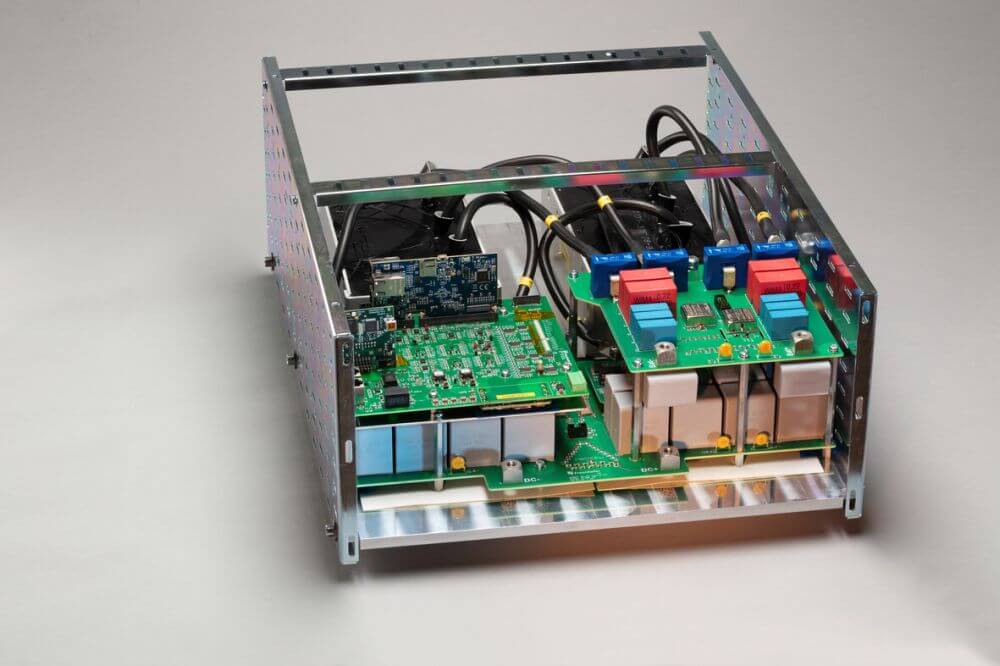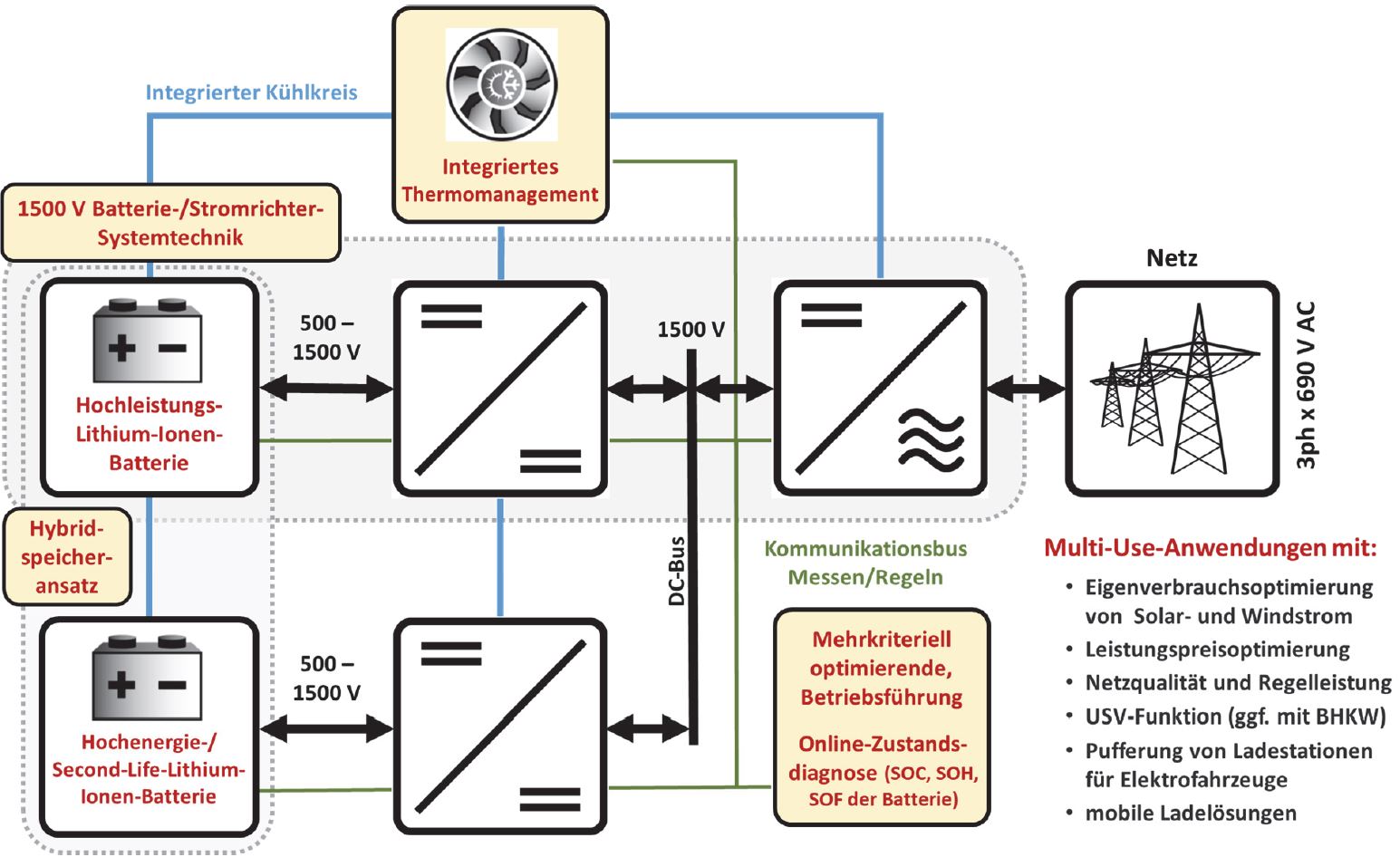| Duration: | 1/2020 - 11/2022 |
| Contracting Authority/ Sponsors: |
Bundesministerium für Wirtschaft und Energie (BMWi) |
| Project Partners: | AKASOL AG, HYDAC International GmbH, TU Dresden |
| Project Focus: |
HYBAT – Hybrid Lithium-Ion Battery Storage Solution with 1500 V Systems Technology, Innovative Thermal Management and Optimizing Operation Management


Energy storage systems play a key role in the course of the energy transition and in the associated conversion of the energy supply to fluctuating renewable energies. This development is supported by the stark reduction in the costs of lithium-ion battery technology. However, as battery cell prices decrease, the significance of system setup costs (for battery modules, power electronics, thermal management) is growing. A trend toward higher system voltages is emerging in an effort to reduce these costs and increase power density.
The goal of the “HYBAT” project is to develop a cost-optimized, 1500-volt hybrid lithium-ion battery-based storage system. The increased system voltage allows the battery modules and the power electronics to produce the same output at lower currents. This leads to smaller system components and lower thermal losses, both of which result in higher power densities.
To further exploit this effect, a holistic, integrated thermal management system is being developed to dissipate power electronics and battery system losses. This ensures longevity and high systems performance, since the built-in components can be used more effectively (semiconductor modules, inductance, battery cells, etc.).
A multi-criteria optimization program with online battery status diagnostics will be conducted to enhance the operation of the hybrid battery system (coupling of high-energy/high-output batteries or new/aged batteries).
Finally, the devised system solutions will be examined using a prototype for emulated multi-use and second-life applications.